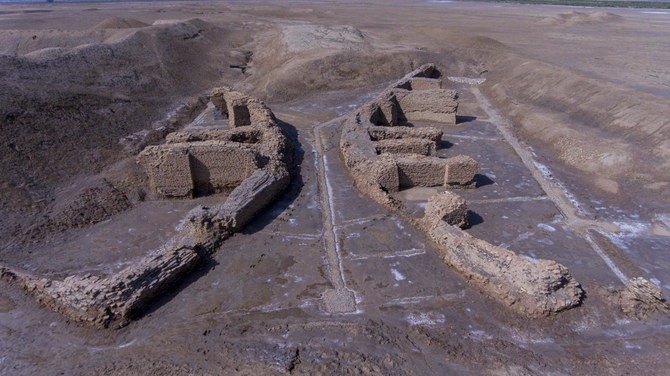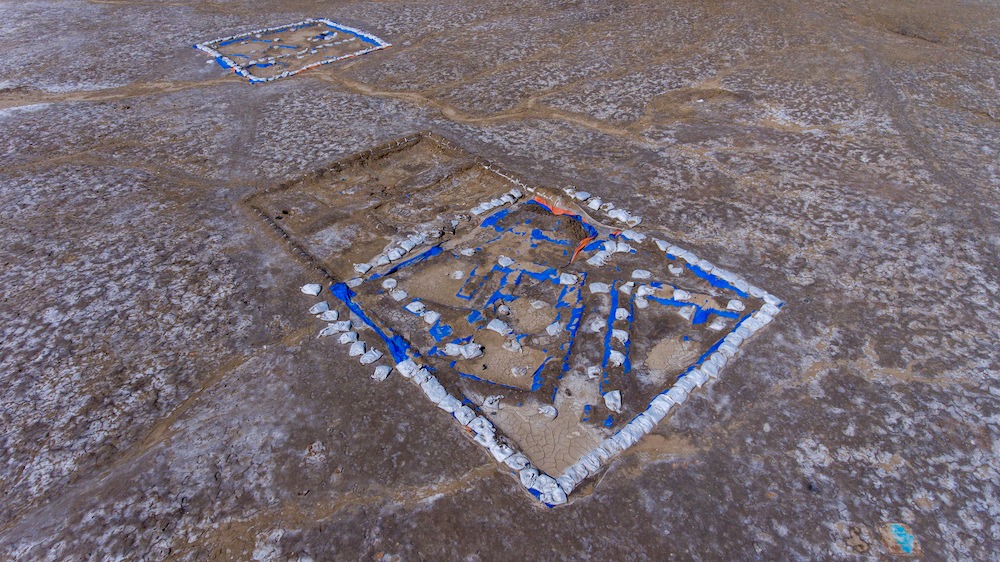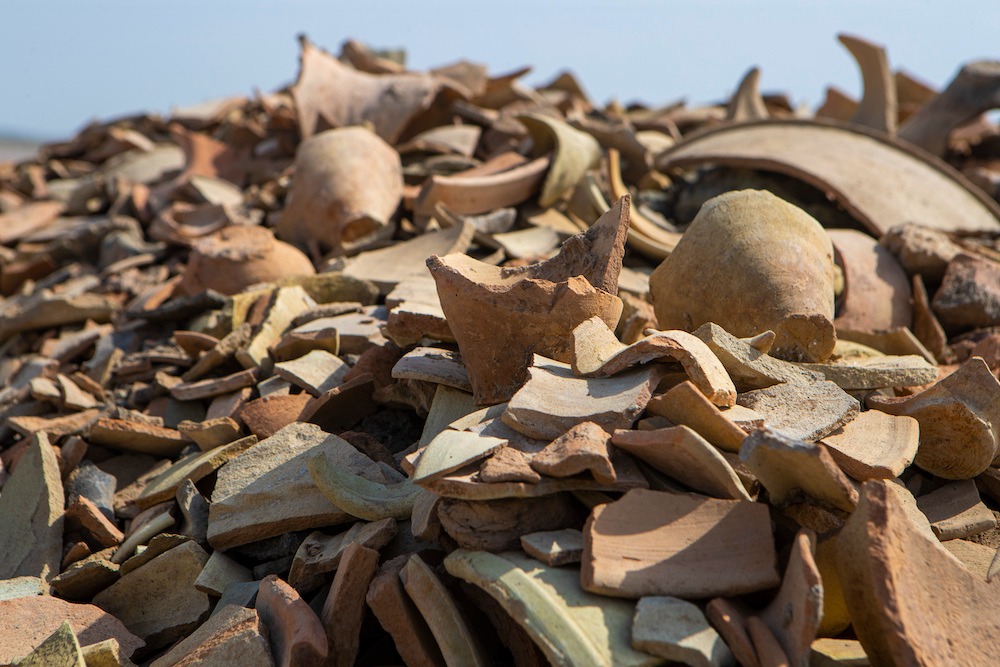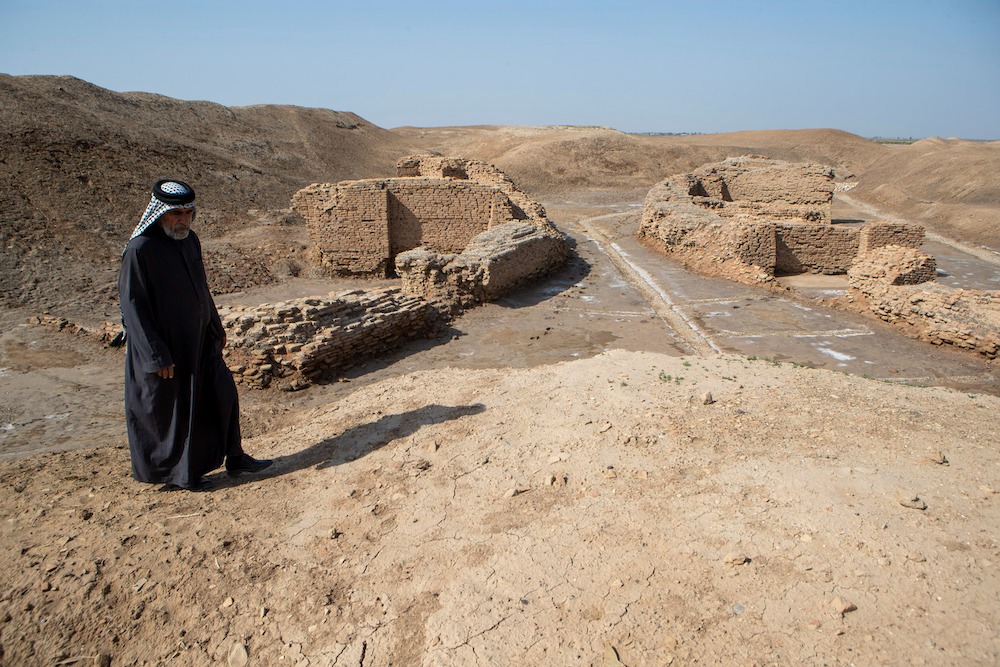BAGHDAD: An international archaeological mission has uncovered the remnants of what is believed to be a 5,000-year-old restaurant or tavern in the ancient city of Lagash in southern Iraq.

The discovery of the ancient dining hall — complete with a rudimentary refrigeration system, hundreds of roughly made clay bowls and the fossilized remains of an overcooked fish — announced in late January by a University of Pennsylvania-led team, generated some buzz beyond Iraq’s borders.
It came against the backdrop of a resurgence of archaeology in a country often referred to as the “cradle of civilization,” but where archaeological exploration has been stunted by decades of conflict before and after the US invasion of 2003. Those events exposed the country’s rich sites and collections to the looting of tens of thousands of artifacts.
“The impacts of looting on the field of archaeology were very severe,” Laith Majid Hussein, director of the State Board of Antiquities and Heritage of Iraq, told The Associated Press. “Unfortunately, the wars and periods of instability have greatly affected the situation in the country in general.”
With relative calm prevailing over the past few years, the digs have returned. At the same time, thousands of stolen artifacts have been repatriated, offering hope of an archaeological renaissance.
“‘Improving’ is a good term to describe it, or ‘healing’ or ‘recovering,’” said Jaafar Jotheri, a professor of archaeology at University of Al-Qadisiyah, describing the current state of the field in his country.

Iraq is home to six UNESCO-listed World Heritage Sites, among them the ancient city of Babylon, the site of several ancient empires under rulers like Hammurabi and Nebuchadnezzar.
In the years before the 2003 US invasion, a limited number of international teams came to dig at sites in Iraq. During Saddam Hussein’s rule, Jotheri said, the foreign archaeologists who did come were under strict monitoring by a suspicious government in Baghdad, limiting their contacts with locals. There was little opportunity to transfer skills or technology to local archaeologists, he said, meaning that the international presence brought “no benefit for Iraq.”
The country’s ancient sites faced “two waves of destruction,” Jotheri said, the first after harsh international sanctions were imposed following Iraq’s 1990 invasion of Kuwait and desperate Iraqis “found artifacts and looting as a form of income” and the second in 2003 following the US invasion, when “everything collapsed.”
Amid the ensuing security vacuum and rise of the Islamic State militant group, excavations all but shut down for nearly a decade in southern Iraq, while continuing in the more stable northern Kurdish-controlled area. Ancient sites were looted and artifacts smuggled abroad.
The first international teams to return to southern Iraq came in 2014 but their numbers grew haltingly after that.
The digs at Lagash, which was first excavated in 1968, had shut down after 1990, and the site remained dormant until 2019.

Unlike many others, the site was not plundered in the interim, largely due to the efforts of tribes living in the area, said Zaid Alrawi, an Iraqi archaeologist who is the project manager at the site.
Would-be looters who came to the area were run off by “local villagers who consider these sites basically their own property,” he said.
A temple complex and the remains of institutional buildings had been uncovered in earlier digs, so when archaeologists returned in 2019, Alrawi said, they focused on areas that would give clues to the lives of ordinary people. They began with what turned out to be a pottery workshop containing several kilns, complete with throwaway figurines apparently made by bored workers and date pits from their on-shift snacking.
Further digging in the area surrounding the workshop found a large room containing a fireplace used for cooking. The area also held seating benches and a refrigeration system made with layers of clay jars thrust into the earth with clay shards in between.
The site is believed to date to around 2,700 BC. Given that beer drinking was widespread among the ancient Sumerians inhabiting Lagash at the time, many envisioned the space as a sort of ancient gastropub.
But Alrawi said he believes it was more likely a cafeteria to feed workers from the pottery workshop next door.

“I think it was a place to serve whoever was working at the big pottery production next door, right next to the place where people work hard, and they had to eat lunch,” he said.
Alrawi, whose father was also an archaeologist, grew up visiting sites around the country. Today, he is happy to see “a full throttle of excavations” returning to Iraq.
“It’s very good for the country and for the archaeologists, for the international universities and academia,” he said.
As archaeological exploration has expanded, international dollars have flowed into restoring damaged heritage sites like the Al-Nouri mosque in Mosul, and Iraqi authorities have pushed to repatriate stolen artifacts from countries as near as Lebanon and as far as the United States.
Last month, Iraq’s national museum began opening its doors to the public for free on Fridays — a first in recent history. Families wandered through halls lined with Assyrian tablets and got an up-close look at the crown jewel of Iraq’s repatriated artifacts: a small clay tablet dating back 3,500 years and bearing a portion of the Epic of Gilgamesh that was looted from an Iraqi museum 30 years ago and returned from the US two years ago. The tablet is among 17,000 looted artifacts returned to Iraq from the US
Ebtisam Khalaf, a history teacher who was one of the visitors to the museum on its first free day, said, “This is a beautiful initiative because, we can see the things that we only used to hear about.”
Before, she said, her students could “only see these antiquities in books. But now we can see these beautiful artifacts for real.”
Leave a Reply